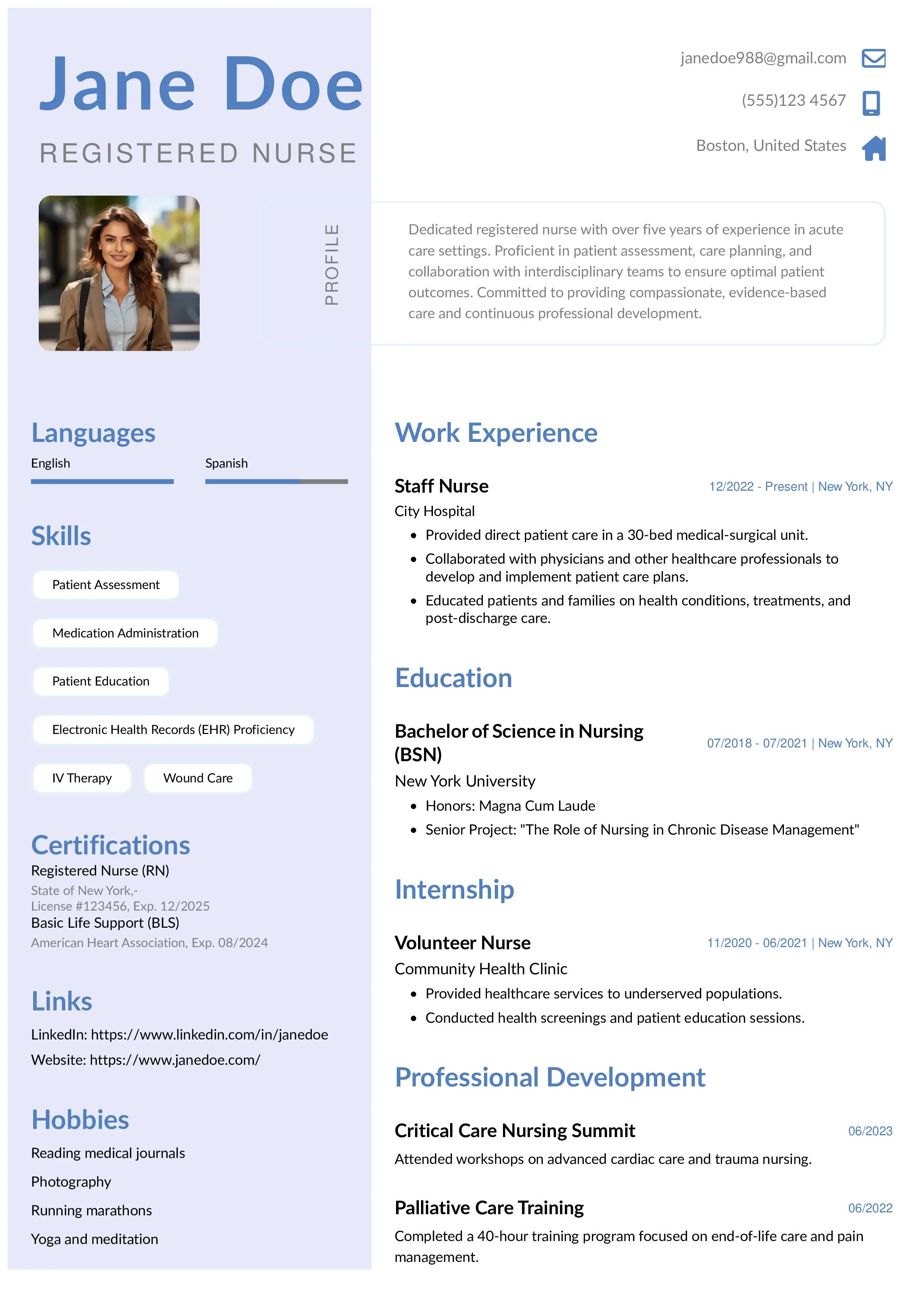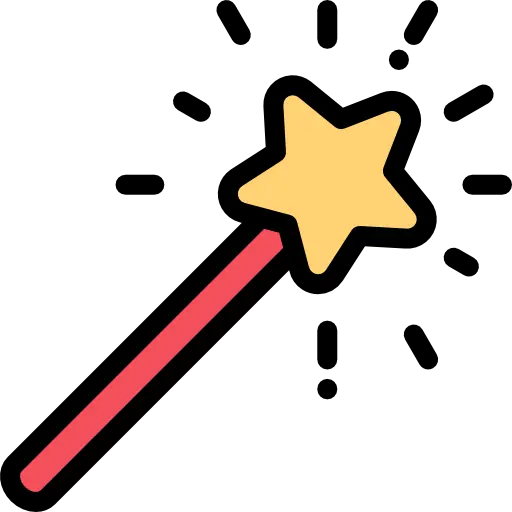How to Choose the Right Nursing Resume Format
Trust Score: 4.8
351 reviews

Table of Contents
Introduction
Crafting a professional nursing resume goes beyond listing qualifications. It involves selecting the right resume format that aligns with your experience, meets ATS (Applicant Tracking System) standards, and presents your clinical expertise effectively. Whether you are a new grad nurse, a seasoned registered nurse (RN), or looking to transition into a nursing specialty, choosing the right format will significantly impact your chances of getting shortlisted.
Why the Resume Format Matters in Nursing Careers
In today’s healthcare job market, where recruiters often scan resumes in less than 10 seconds, the format of your nursing resume plays a crucial role. The format is not just a design choice—it dictates how your skills, nursing education, clinical rotations, certifications, and employment history are communicated.
Many healthcare employers use ATS software to pre-screen resumes. A poorly formatted resume may never reach a hiring manager. An optimized format helps highlight nursing competencies, relevant medical terminology, and measurable achievements in a clear, structured way.
Main Resume Formats for Nursing Professionals
Here are the three most widely used resume formats in the nursing field:
1. Chronological Resume Format
Ideal for: Experienced nurses with a solid work history.
This format lists your job roles in reverse chronological order, starting with the most recent. It's widely accepted in the healthcare industry and preferred by recruiters because it shows growth and stability.
Advantages:
 Shows career progression
Shows career progression ATS-compatible layout
ATS-compatible layout Highlights long-term commitment and reliabilityRegistered nurse resume example
Highlights long-term commitment and reliabilityRegistered nurse resume example
Edit and download this registered nurse resume example created using the Instaresume's creative resume template.
Best suited for: ICU nurses, staff RNs, travel nurses, ER nurses with 2+ years of experience
2. Functional Resume Format
Ideal for: New graduates, career changers, or those with employment gaps.
This format emphasizes nursing skills and core competencies over chronological work experience. It is especially beneficial for those transitioning from non-nursing roles or re-entering the job market.
Advantages:
 Focuses on skills and clinical exposure
Focuses on skills and clinical exposure Great for highlighting coursework and certifications
Great for highlighting coursework and certifications Shifts attention from work gaps
Shifts attention from work gaps
Best suited for: Nursing students, LPNs moving into RN roles, returning nurses after a break
3. Combination Resume Format
Ideal for: Nurses with diverse experience and specialized skills.
This format merges the chronological and functional styles, making it ideal for nursing specialists, nurse educators, or nurse practitioners looking to emphasize both skills and job roles.
Advantages:
 Balances hard and soft skills with career history
Balances hard and soft skills with career history Useful for promotions and leadership roles
Useful for promotions and leadership roles Can be customized to suit advanced roles
Can be customized to suit advanced roles
Choosing Based on Career Stage
Nursing Students & Freshers
If you are applying for your first job, highlight clinical placements, academic achievements, and relevant skills like medication administration, patient interaction, or electronic charting. Use a functional layout to position yourself as job-ready despite limited work experience.Nursing student resume example
Edit and download this nursing student resume example created using the Instaresume's night · black and white resume template.
Registered Nurses (1–5 Years of Experience)
For RNs with professional hospital experience, a chronological format works best. Focus on accomplishments like improved patient recovery time or reduced patient complaints. Mention specific tools like EMR software or IV therapy.
Specialized Nurses & Nurse Practitioners
If you've worked across multiple departments or specialties, or you’re applying for a leadership role, a combination format allows you to showcase both your technical skills and supervisory experience. Highlight certifications, training sessions conducted, or mentorship roles.
Essential Sections in Every Nursing Resume Format
Regardless of the format, the following resume sections are non-negotiable:
- Contact Details – Full name, phone number, email, location
- Professional Summary – Brief and tailored introduction
- Licenses & Certifications – RN, BLS, ACLS, PALS, etc.
- Skills Section – Clinical, technical, interpersonal
- Work Experience or Clinical Rotations – Roles, employers, dates
- Education – Degree, institution, year of graduation
- Optional Sections – Languages, awards, volunteer work
Formatting Tips to Make It ATS-Friendly
 Stick to standard fonts like Arial or Calibri (10–12 pt)
Stick to standard fonts like Arial or Calibri (10–12 pt) Use bullet points for tasks and accomplishments
Use bullet points for tasks and accomplishments Avoid tables, graphics, and headers in footers
Avoid tables, graphics, and headers in footers Keep section titles simple and conventional (e.g., “Experience,” “Skills”)
Keep section titles simple and conventional (e.g., “Experience,” “Skills”) Submit as a PDF or Word file depending on job board requirement
Submit as a PDF or Word file depending on job board requirement
Common Mistakes in Nursing Resume Formatting
- Overcrowded layouts: Too much text discourages quick reading
- Inconsistent styling: Different font sizes or spacing looks unprofessional
- Not customizing for each job: Using the same resume for every job decreases relevance
- Neglecting soft skills: Nursing involves empathy, teamwork, and communication
- Vague statements: Use numbers (e.g., “Monitored 20+ patients daily”) to show impact
Final Thoughts
The format of your nursing resume plays a strategic role in shaping your career opportunities. For freshers, a functional format brings out core competencies. For experienced professionals, the chronological format helps highlight achievements and steady employment. And for specialists, the combination format offers the most flexibility to balance both.
Your resume format should reflect your nursing journey, emphasize your readiness for patient care, and demonstrate your ability to adapt in fast-paced healthcare settings. Pair the right format with strong content, and you’ll make a lasting impression on recruiters and hiring managers alike.
FAQs
What is the best resume format for nurses in 2025?
The reverse-chronological format is recommended as it highlights your career progression, allowing potential employers to assess your qualifications efficiently. beamjobs.com
How can I make my nursing resume stand out to Applicant Tracking Systems (ATS)?
Incorporate relevant keywords from the job description, such as "patient care," "electronic medical records (EMR)," and "acute care," to ensure your resume aligns with ATS criteria. You can take reference from resumeworded.com
Should I include a summary or objective statement in my nursing resume?
Yes, a concise summary highlighting your experience, key skills, and career goals can provide a snapshot of your qualifications and set the tone for your resume.
How do I effectively showcase my clinical skills on my resume?
Create a dedicated skills section listing both hard and soft skills, such as "IV therapy," "patient education," "critical thinking," and "communication." Provide examples of how you've applied these skills in your work experience. You can take reference from resumegenius.com








